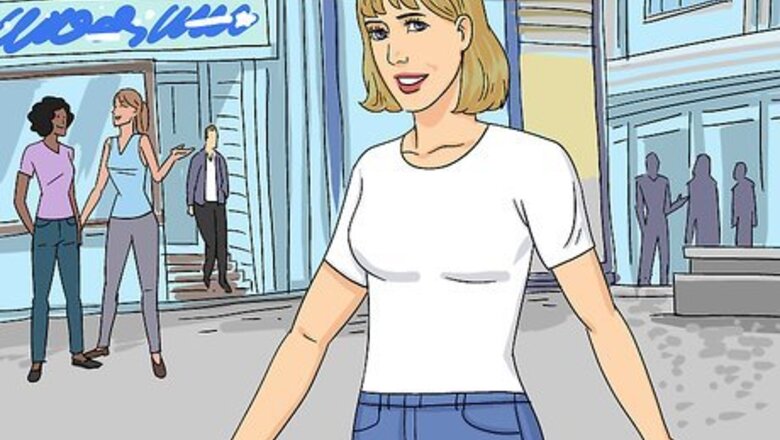
views
Walk slowly and look around in all directions
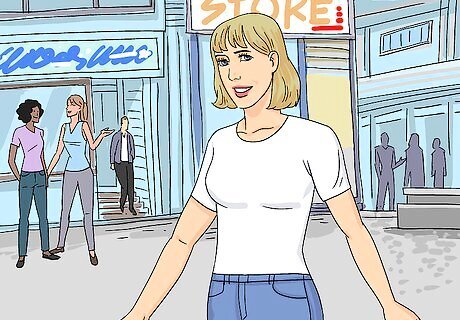
This is a great way to start paying more attention to your surroundings. Try to get out of the mindset of just trying to get from point A to point B. Instead of walking as fast as possible to get where you’re going, make a conscious effort to slow down your walking speed and take in everything around you. Whether you’re walking somewhere or sitting down outdoors, make an effort to look from side to side, behind you, and above you regularly. Take notice of what’s all around you instead of only looking at what’s in front of you.
Take pictures of your surroundings.

Looking at things through a lens gives you a whole new perspective. Instead of just going from one place to another, take a camera with you or keep your phone out with the camera ready to snap a shot. Look for interesting buildings, objects, or scenes along your path and take pictures of them as you go! For example, maybe you notice a flowery bush or an old building with unique architectural features that you wouldn’t otherwise pay attention to. If you choose to use your phone camera, make sure not to spend all your time staring at your phone. Sometimes phone cameras can't quite capture what our eyes can!
Explore new places.
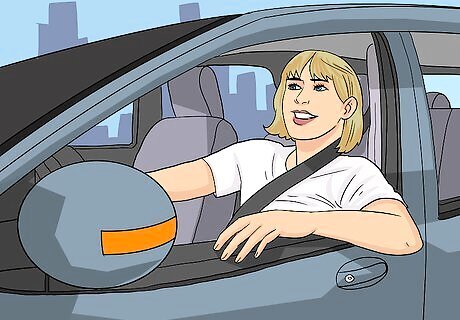
This gets you out of your regular haunts, where you aren't as observant. Take a new route to work or go to a new part of town on the weekend, for example. That way, you’re not just on autopilot and doing the same old things without really taking in your surroundings. If you take a new route to work, you’re going to notice much more than if you go down the same street you’ve been down hundreds of times and know like the back of your hand. You can also expose yourself to new environments by trying a new activity. For example, sign up for a rock climbing class or take an art class.
Get rid of distractions.
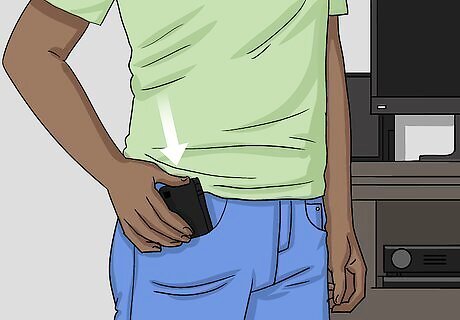
Distractions prevent you from noticing things around you. Put away your smartphone or any other device that’s occupying your attention. Or, turn off your TV show or the music you’re listening to. Look around you instead of giving all your attention to something else. Distractions can also be dangerous. If you’re watching a video on your phone while you’re crossing the street, for example, you might not notice a speeding car coming your way.
Pay more attention to others.
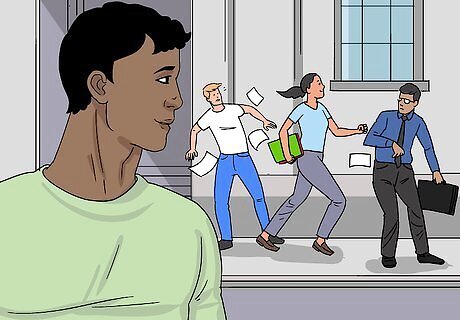
When you shift your attention outward you'll notice much more. Focus on observing other people. Pay attention to things they say, their body language, and how they behave. Look at the way and speed at which they’re moving to determine if they’re relaxed, in a rush, or in some kind of distress. For example, if you see someone speed-walking down the sidewalk and almost running over other pedestrians, you can assume that they’re probably in a rush to get somewhere. Anderson Cooper Anderson Cooper, Journalist & Political Correspondent Use your observational skills. "If you feel like an outsider, you tend to observe things a lot more."
Ask yourself questions.
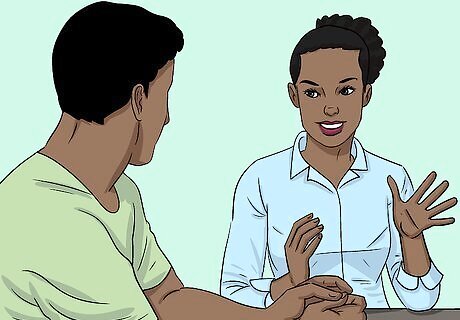
This helps you draw conclusions based on what you observe. Ask yourself things like: “How is this person really feeling?” “What is the difference between what he is saying and what he is really feeling?” and “How many people in this room are in a good mood?” Keep your mind busy and keep prodding yourself to discover what's really happening in a situation. At first, switching to this inquisitive mode of thinking can be a little bit distracting. Don’t ask yourself so many questions that you’re not living in the moment. If you aren’t sure where to start with this technique, simply ask yourself “Why?” For example, “Why is this person here in this park right now?” Then, make educated guesses based on their behavior. As you practice this more, you'll learn how to keep questioning a situation while paying complete attention.
Use all of your senses to observe.

Engaging all your senses is the ultimate way to be fully observant. Use all 5 senses when you're in a conversation with someone, when you're observing others, or when you’re taking in your surroundings. Notice sounds, smells, textures, and tastes of things around you, as appropriate. Look around to observe and scan your surroundings and people's behavior wherever you are. Listen to pay attention to different sounds around you distinguish voices from background noise. Use your sense of touch to infer the moods of people. For example, if someone shakes hands with you and you find the person's hands sweaty, the person may be nervous. Use your nose to detect any smell that is out of the ordinary, like a sudden aroma of gas or smoke in the area. Pay attention to your taste buds to notice all the different flavours of a meal you’re eating or of a beverage you’re drinking.
Watch a foreign movie without subtitles.

This helps you focus on details other than the story. Pick a foreign film that looks interesting on your favorite streaming service and turn off the subtitles. Pay attention to things like the characters’ body language, tone of voice, and surroundings. You can make it a game by coming up with your own storyline based on how the characters are acting as you watch.
Train your mind with observational games.
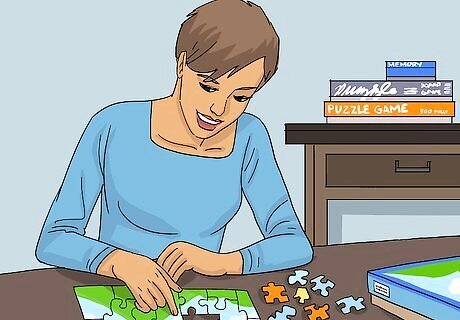
Puzzles and games help you notice things more quickly. For example, play “Where's Waldo?” put together a jigsaw puzzle, or play Memory, the matching card game. Or, try a “spot the differences” identical picture game. Putting in just 15 minutes a day into a mental game or puzzle is a great exercise for your brain and your observational powers. You can also play an easy observational game by doing this: grab a pen and paper and quickly write down everything you can think of about the room or space you’re in without looking around.
Meditate daily.
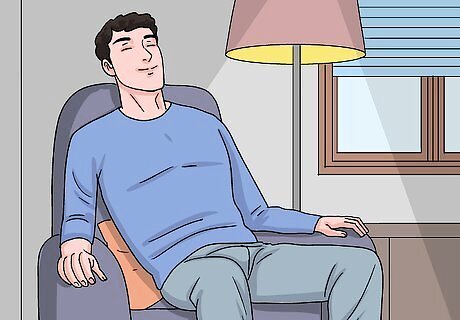
Meditating helps build awareness of your mind and body. Sit down for 10-15 minutes every morning and/or evening, make sure you're comfortable in a quiet room, and listen to the breath rising and falling out of your body. Focus on relaxing one body part at a time until you find yourself in a state of real relaxation, and are able to notice all of the little things around you while keeping your eyes closed. As you meditate, you let distractions out of your brain and become more aware of your surroundings and your own state of being.
Do a scavenger hunt.
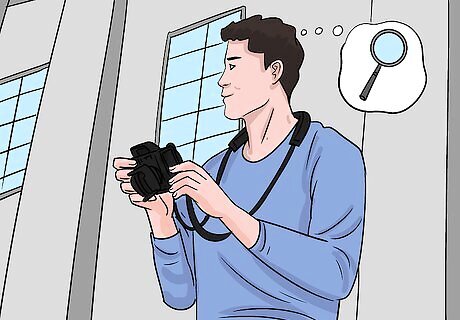
These are a great wait to be on the lookout for things throughout your day. Pick an object or something else to look for and take a picture of it or make a note of it every time you see it throughout the day. When you’re all done, consider why each of those things is there or how they got there. Your scavenger hunt could be looking for something as mundane as fire hydrants or as unique as art by a certain graffiti artist, for example. You can also look for certain activities or scenes throughout the day, such as people playing sports or drinking coffee.
Keep an observational journal.
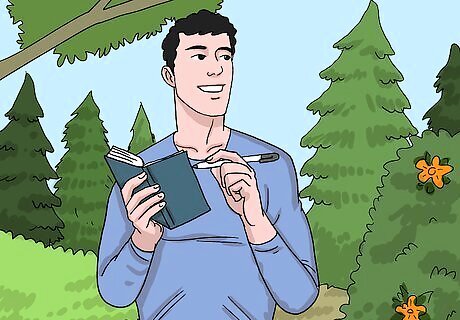
This helps build a habit of observing details in daily life. Carry a notebook and writing utensil with you wherever you go throughout the day. Write a note every time you observe unusual sights, sounds, or occurrences. For example, if you go to a nature park on a Saturday, take your journal with you and make notes about how new bird noises you hear sound and how plants you’ve never noticed before look.
Take up drawing.
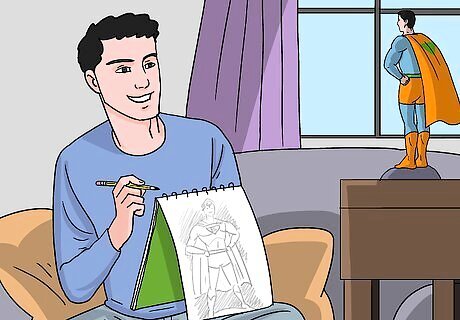
Drawing helps you gain a new understanding of things you see. Do a drawing activity at least once a week to help improve your visual observation skills. Sit down with a piece of paper and a pencil at home or somewhere else and sketch out something that’s in front of you. Try to include as many details of what you’re looking at as possible in your drawing. For example, you could sit down in front of a sculpture or a work of art and try to draw it yourself.













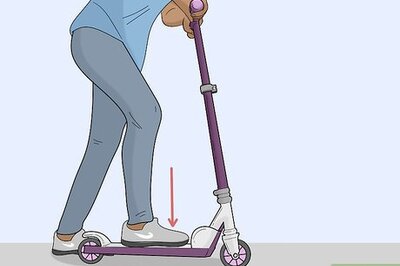



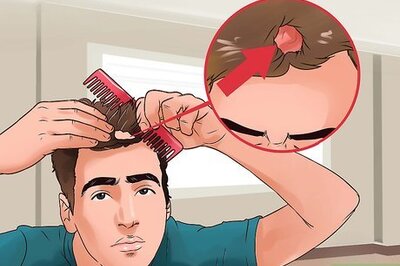


Comments
0 comment